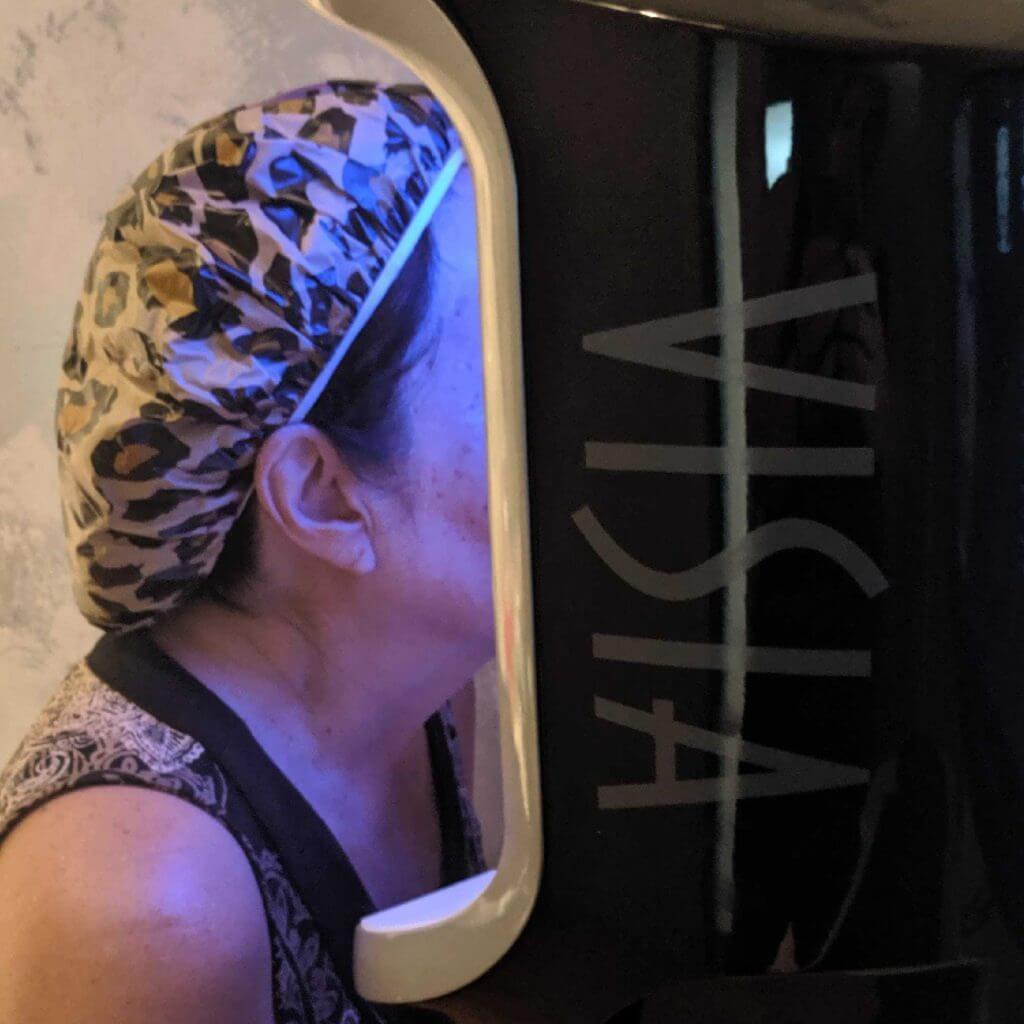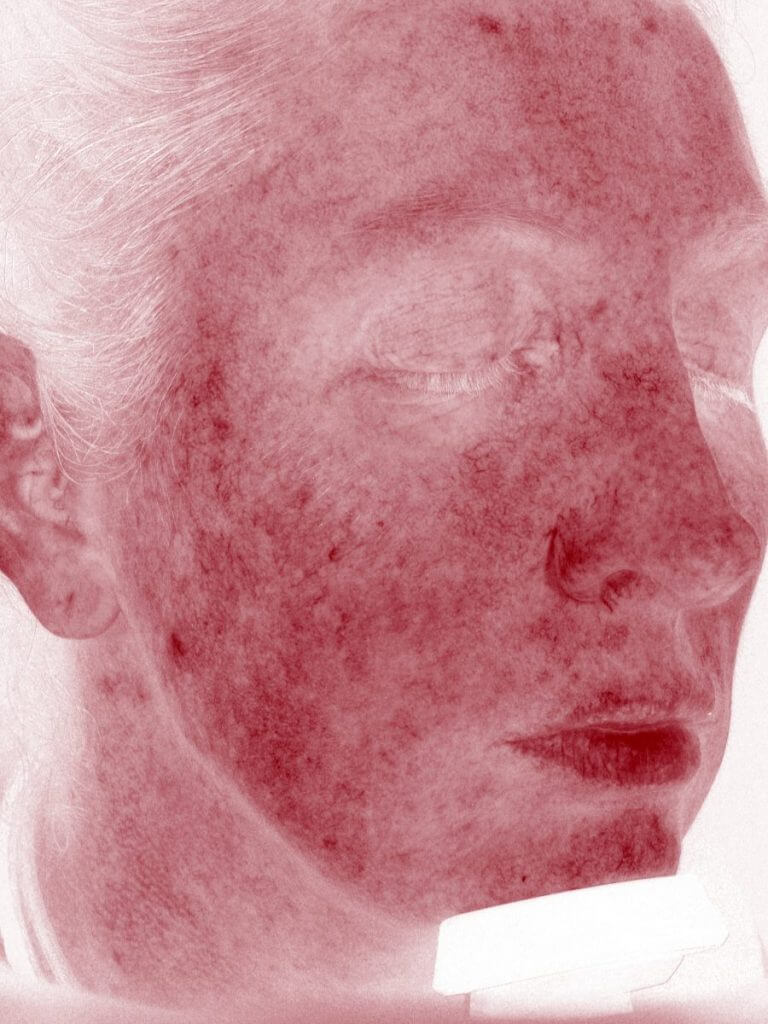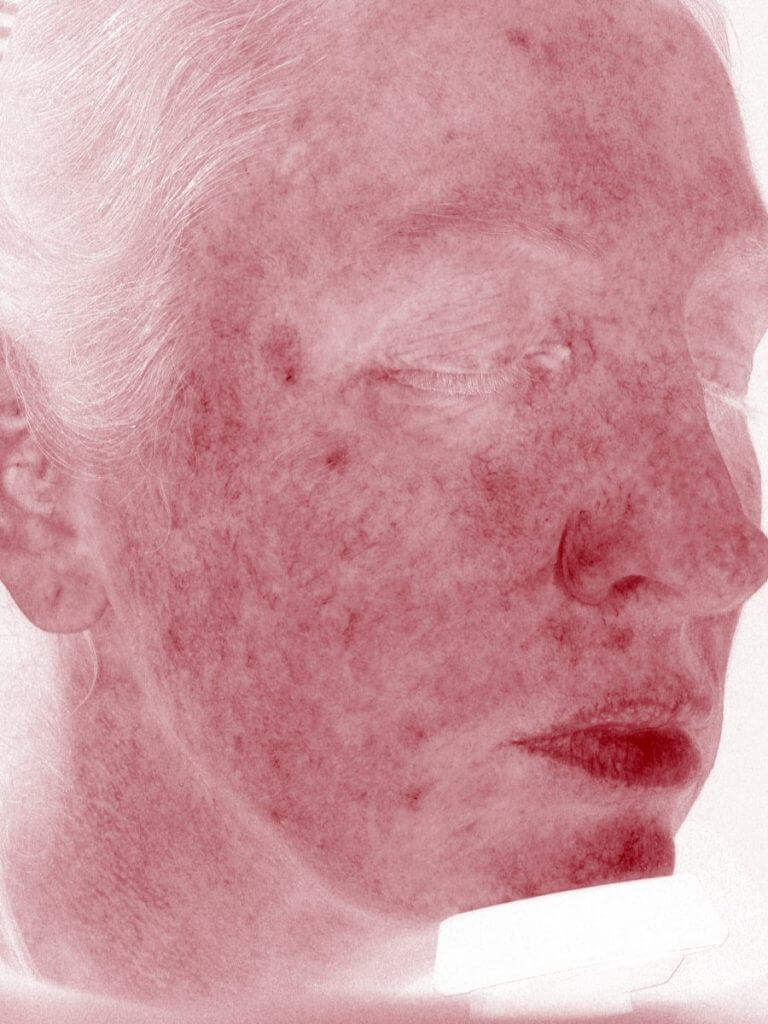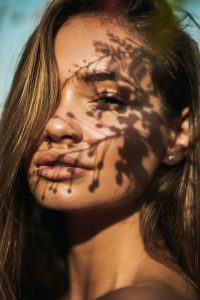WHAT IS VISIA IMAGING?
July 2022

REDEFINING SKIN CARE
At Melinda Menezes, MD every patient’s Aesthetic Medical journey begins with a one-on-one consultation and VISIA imaging session. VISIA is a digital imaging system that evaluates your skin health not just on the surface, but across sub-surface levels as well. You can think of it as a cutting-edge photo booth that provides a detailed report of your total skin health. When you get your first set of images taken, you’ll receive information about your skin health in eight different categories.
Spots
Spots are typically brown or red skin lesions including freckles, acne scars, hyper-pigmentation and vascular lesions. Spots are distinguishable by their distinct color and contrast from the background skin tone. Spots vary in size and generally have a circular shape.
Pores
Pores are the circular surface openings of sweat gland ducts. Due to shadowing, pores appear darker than the surrounding skin tone and are identified by their darker color and circular shape. The VISIA system distinguishes pores from spots based on size; by definition, the area of a pore is much smaller than a spot.
Wrinkles
Wrinkles are furrows, folds or creases in the skin, which increase in occurrence as a result of sun exposure, and are associated with decreasing skin elasticity. This skin feature has the greatest variability from image to image as it is highly dependent upon the facial expression of the client. Wrinkles are identified by their characteristic long, narrow shape.
Texture
Texture is primarily an analysis of skin smoothness. Texture measures skin color and smoothness by identifying gradations in color from the surrounding skin tone, as well as peaks (shown in yellow) and valleys (shown in blue) on the skin surface that indicate variations in the surface texture.
Porphyrins
Porphyrins are bacterial excretions that can become lodged in pores and lead to acne. Porphyrins fluoresce in UV light and exhibit circular white spot characteristics.
UV Spots
UV spots occur when melanin coagulates below the skin surface as a result of sun damage. UV spots are generally invisible under normal lighting conditions. The selective absorption of the UV light by the epidermal melanin enhances its display and detection by VISIA.
Redness
Red Areas represent a potential variety of conditions, such as acne, inflammation, Rosacea or spider veins. Blood vessels and hemoglobin contained in the papillary dermis, a sub-layer of skin, give these structures their red color, which is detected by the RBX Technology in VISIA. Acne spots and inflammation vary in size but are generally round in shape. Rosacea is usually larger and diffuse compared to acne, and spider veins usually are short, thin and can be interconnected in a dense network.
Use the scroll bar in the image to see the change in redness and red areas before and after the patient received IPL treatment.
Brown spots
Brown Spots are lesions on the skin such as hyper-pigmentation, freckles, lentigines, and melasma. Brown Spots occur from an excess of Melanin. Melanin is produced by melanocytes in the bottom layer of the epidermis. Brown Spots produce an uneven appearance to the skin, and are detected in VISIA by RBX.


ESTIMATED SKIN AGE
One of the most useful and interesting results VISIA provides is the percentile score and rank of your estimated skin age. This result is based on the amount of sun damage and change in your skin compared to others who are the same age, gender, and skin type. You may think you have a young-looking complexion, but VISIA can reveal years of sun damage beneath the surface of your skin.
The underlying damage VISIA can reveal will make its way to the surface if not addressed. With this detailed report, Dr. Menezes and her team will develop a custom treatment plan designed to meet your unique needs and skin health goals.
SCHEDULE A CONSULTATION AND VISIA IMAGING APPOINTMENT TODAY
Our VISIA imaging and analysis is one of the best ways to fully understand your skin health and the steps we can take together to reach your goals. Call the clinic at 808-855-8436 to schedule an appointment today.
FREE SUNSCREEN!
Sign up to receive our monthly newsletter and get a free full-size sunscreen ($50 value) when you spend $250 on skin care products in our clinic boutique.

